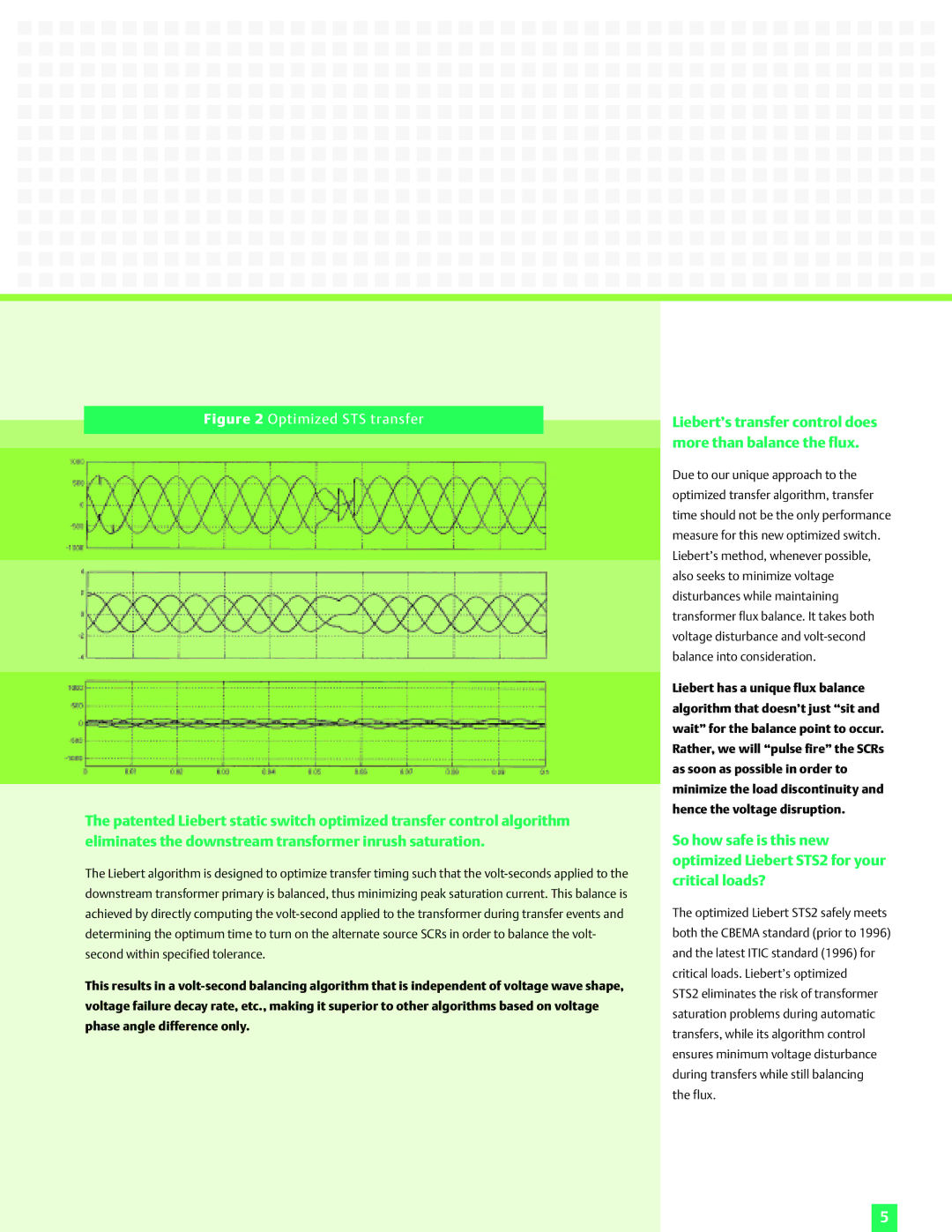
Figure 2 Optimized STS transfer
The patented Liebert static switch optimized transfer control algorithm eliminates the downstream transformer inrush saturation.
The Liebert algorithm is designed to optimize transfer timing such that the
This results in a
Liebert’s transfer control does more than balance the flux.
Due to our unique approach to the optimized transfer algorithm, transfer time should not be the only performance measure for this new optimized switch. Liebert’s method, whenever possible, also seeks to minimize voltage disturbances while maintaining transformer flux balance. It takes both voltage disturbance and
Liebert has a unique flux balance algorithm that doesn’t just “sit and wait” for the balance point to occur. Rather, we will “pulse fire” the SCRs as soon as possible in order to minimize the load discontinuity and hence the voltage disruption.
So how safe is this new optimized Liebert STS2 for your critical loads?
The optimized Liebert STS2 safely meets both the CBEMA standard (prior to 1996) and the latest ITIC standard (1996) for critical loads. Liebert’s optimized
STS2 eliminates the risk of transformer saturation problems during automatic transfers, while its algorithm control ensures minimum voltage disturbance during transfers while still balancing the flux.
5
